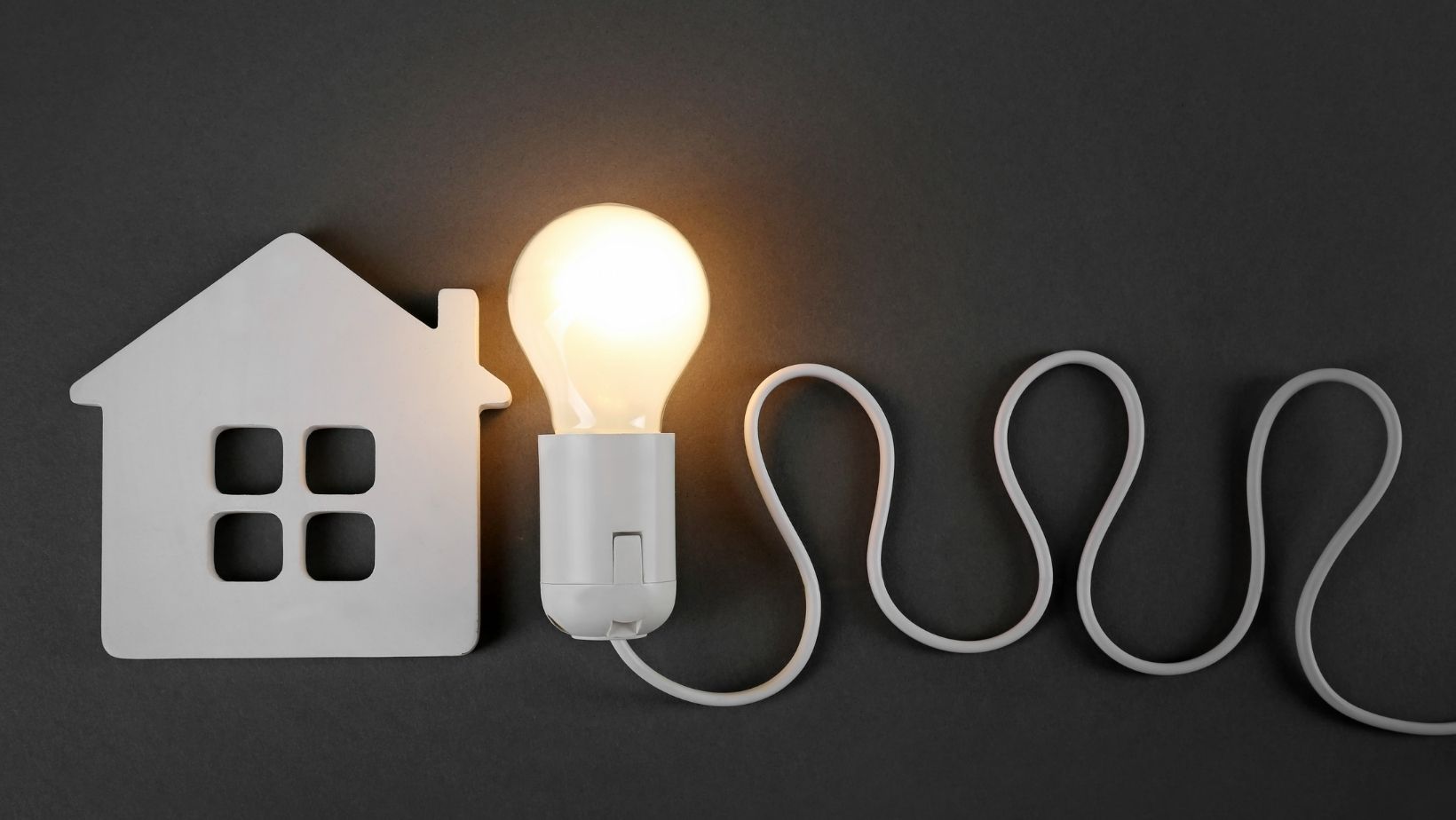That familiar buzz on your phone—another ‘Conservation Appeal’ from ERCOT. These alerts are becoming a real part of Texas summers. Our state’s energy infrastructure is straining with scorching heatwaves pushing demand sky-high and new industrial loads, like thirsty data centers and crypto mines.
Between 2019 and 2023 alone, these operations tacked on roughly 13 Terawatt-hours (TWh) of commercial electricity demand, like adding over a million homes to the grid. This significant surge from large, flexible users challenges grid stability.
But these warnings don’t have to be a source of anxiety. Instead, consider them a straightforward call to action for smarter energy management. By taking a few proactive steps, you can help stabilize the grid and save a noticeable chunk on your utility bills.
Before the Warning: Building Your Home’s Energy Resilience
Before the heat hits and the grid groans, proactive steps can transform your home into an energy-resilient fortress. By adopting smart habits now, you’ll be well-prepared to manage your energy consumption, ease grid strain, and even pocket some savings when those conservation alerts arrive.
Get Smart About Pre-Cooling
One highly effective way to slash energy costs and ease grid strain is to “pre-cool” your home. How? In the morning or early afternoon, nudge your thermostat down a bit, say to 70 to 72°F. This lets your AC do its heaviest lifting when grid demand and wholesale electricity prices are typically lower. While Texas’s average residential electricity rate was approximately 15.49 cents per kilowatt-hour (kWh) in May 2025, time-of-use plans can offer significantly lower off-peak rates, making that morning cool-down quite economical.
Then, as the famous 4 PM to 8 PM conservation window approaches, you can ease your thermostat up to 78°F or even higher. Your home’s “thermal mass”—just a fancy way of saying your walls, furniture, everything that absorbs the coolness—will keep your place comfortable for hours—no need for your AC to kick into overdrive during the grid’s most stressed, expensive period. Want to make it even easier? A smart thermostat can note your habits and adjust automatically for peak savings.
Know Your Energy Hogs
Knowledge is power, especially regarding your home’s electricity use. Pinpointing which appliances consume the most energy empowers you to make smarter choices and drastically cut your consumption during high-demand times.
Sure, Texas has made huge strides with utility-scale solar and battery storage, which are vital for stabilizing the grid. However, residential demand is still a massive puzzle; every homeowner can help manage it.
Figure out your home’s biggest energy users, then focus on shifting their tasks outside that crucial 4 PM to 8 PM window. Rescheduling high-consumption activities to the morning or late evening directly boosts grid reliability and shaves dollars off your monthly bill.
- HVAC System: Your AC is undoubtedly the king of energy consumption during summer. Pre-cooling is your best defense. According to the US Department of Energy, a simple thing like cleaning filters monthly can boost efficiency by 5 to 15 percent.
- Electric Water Heater: This one’s usually the second biggest user. Try to avoid using hot water for laundry or dishes during peak hours. If you’re really serious, consider adding a timer or even upgrading to a heat pump water heater for bigger, long-term savings.
- Clothes Dryer: This appliance is a power hog and blasts heat into your home, making your AC work even harder. Plan to run it late in the evening (after 9 PM) or early in the morning. Use the moisture sensor to avoid over-drying, and always clean the lint filter before each new load for efficiency and safety.
- Dishwasher: Most modern dishwashers have a delay-start feature. Use it! Run your cycles overnight. Always run full loads and use the air-dry setting instead of heated dry to save more energy.
- Oven and Stovetop: Cooking with these uses electricity and heats up your house, forcing your AC into overdrive. During peak hours, grab the microwave, slow cooker, or electric grill; they’re often more efficient for smaller meals.
- Electric Vehicles (EVs): As more of us get EVs, charging them becomes a significant load. Schedule charging for overnight hours—think 10 PM to 6 AM—when demand is lowest and rates are often cheaper.
- Pool Pumps and Hot Tubs: These motors are powerful. Run them during off-peak hours or reduce their run times, especially when a conservation alert is on.
During a Conservation Alert: Your Peak-Hour Action Plan
The Critical Peak Hours: What to Do Immediately
When that conservation alert hits, your primary goal is to drastically cut consumption, especially during the 4- to 8 PM “crunch time.” This period strains the grid: solar power fades as temperatures and home energy demand remain sky-high, creating a critical imbalance. Since electricity rates often spike then, conserving isn’t just helpful; it’s financially savvy. So, immediately bump your thermostat to 78°F or higher – every degree makes a difference – and supplement with ceiling fans. Don’t forget to draw blinds to block the intense sun, particularly on west-facing windows.
Simple, No-Cost Conservation Measures
These small, collective efforts from thousands of households dramatically ease grid strain, helping operators avoid emergency measures like industrial disconnections or rolling outages. Making temporary, no-cost changes during an alert powerfully impacts grid stability. It’s about our community working together to keep the lights on and ensure reliable power for everyone. Effectively, minimize direct electricity use and heat generation by rescheduling major appliances like ovens, washers, and dryers to off-peak times, dimming non-essential lights, and delaying EV charging or pool pump operation until overnight.
After the Alert: Aligning Habits with a Smarter Energy Strategy
The energy-saving habits you pick up during grid alerts aren’t just for emergencies; they translate into real, year-round savings on electricity bills.
From Short-Term Tactics to Long-Term Savings
Every kilowatt-hour saved truly puts money back in your pocket. This financial incentive is growing stronger as market conditions reflect increasing grid strain, with summer 2025 forward prices trading high due to anticipated volatility. By consistently managing your thermostat and shifting appliance use, you’re actively lowering monthly costs and building a more substantial financial buffer against market swings.
Choosing an Electricity Plan That Rewards Smart Habits
Moving beyond just reacting to alerts means picking an electricity plan that actively supports your smart energy habits, designed for today’s Texas market. Consider Time-of-Use (TOU) plans, which offer lower rates during off-peak hours (like late at night or early morning) and higher rates during peak demand. Shifting big activities like laundry or EV charging to those cheaper off-peak windows can seriously cut your overall electricity costs, as many competitive providers in Texas reward this flexible energy use.
Maximize Your Advantages with Renewables
By pairing your energy-saving habits with an appropriate electricity plan, you empower yourself to control your energy costs better. Actively researching and comparing different Texas electricity rates and plan structures allows you to maximize the financial advantages of running your dishwasher overnight or pre-cooling your home before the afternoon rush. For instance, Rhythm Energy, a leading energy company, specializes in 100 percent renewable energy plans, including fixed-rate and time-of-use options, designed to reward customers who manage their consumption strategically, aligning with the state’s growing clean energy portfolio.
Resources like Power to Choose, the official electricity selection site of the Public Utility Commission of Texas, are invaluable for weighing your options. Ultimately, selecting the right plan transforms your conservation efforts into a consistent, cost-effective lifestyle, making you an active player in a more sustainable and stable Texas energy future while keeping more money in your wallet.
Turn Grid Concern into Smart Savings and Stability
The pressure on the Texas electrical grid is a real challenge, but you can confidently navigate and influence it. By strategically pre-cooling your home, smartly timing appliance use during conservation alerts, and embracing simple, no-cost conservation measures, you play a vital role in keeping the lights on for all Texans.
These collective actions significantly reduce grid strain, helping to avoid extreme measures like industrial disconnections or rolling outages. Even better, you’ll see substantial reductions in your monthly energy bills by baking these practices into your long-term routine and pairing them with a savvy electricity plan. When adopted statewide, these individual efforts build a more resilient grid, turning a broader challenge into a personal opportunity for smart, sustainable living.



More Stories
Key Features That Make Small Chop Saws a Great Investment for Precision and Value
Ultimate Marketing Campaigns for Betting Apps: Lessons from the Big Players
Breaking Borders: Hiring Talent in Turkey Made Easy